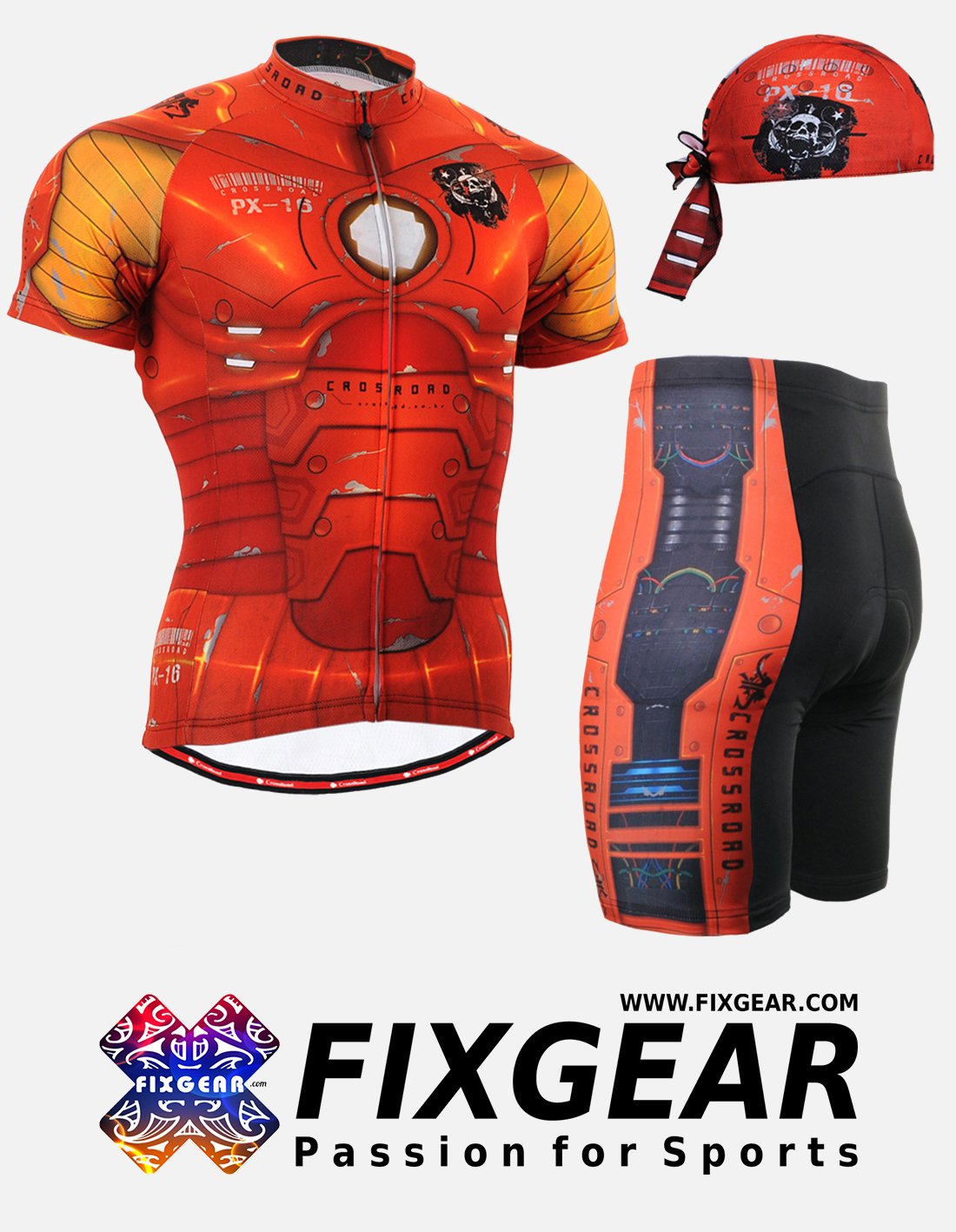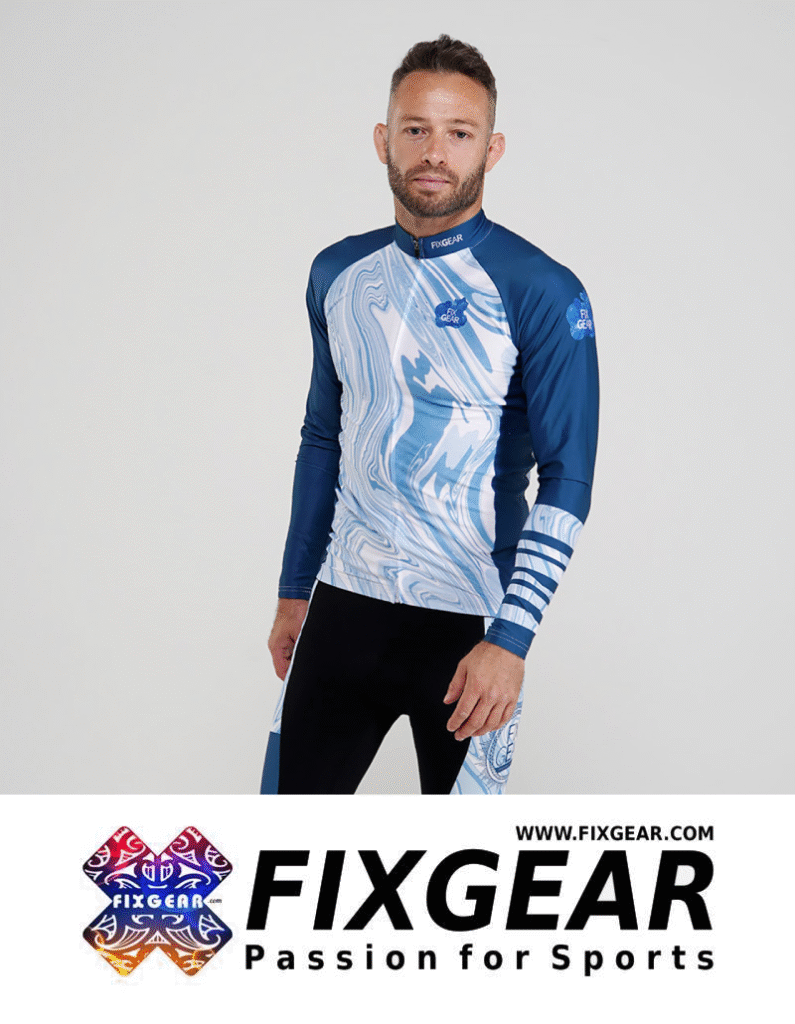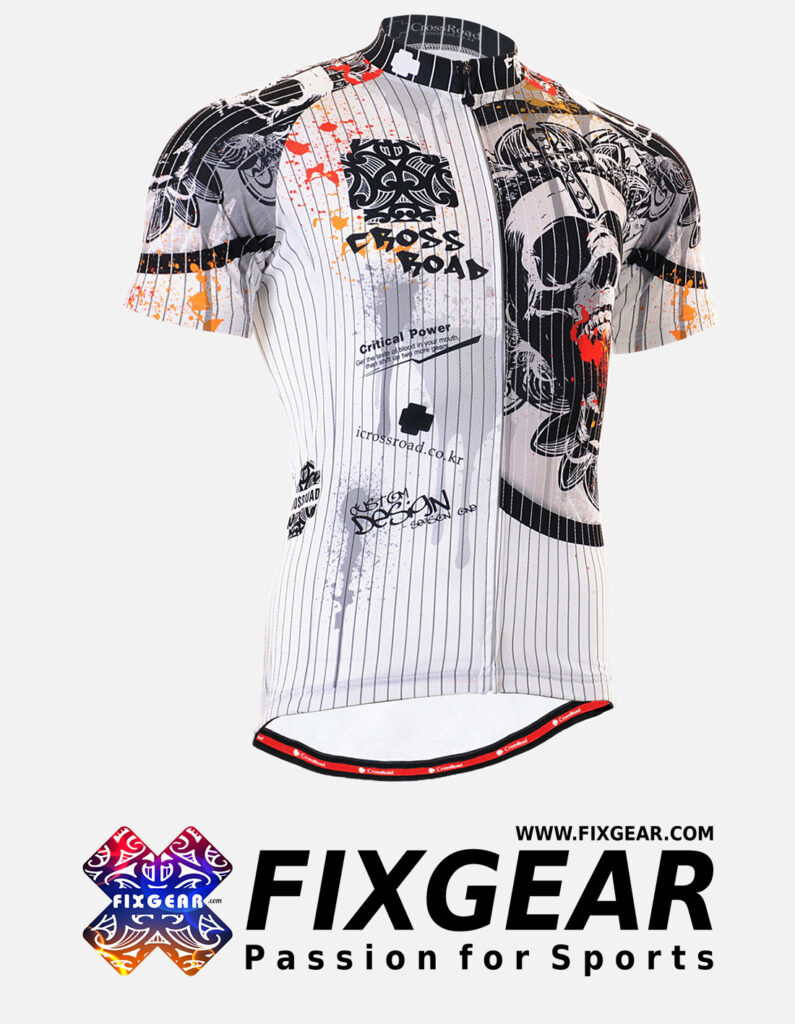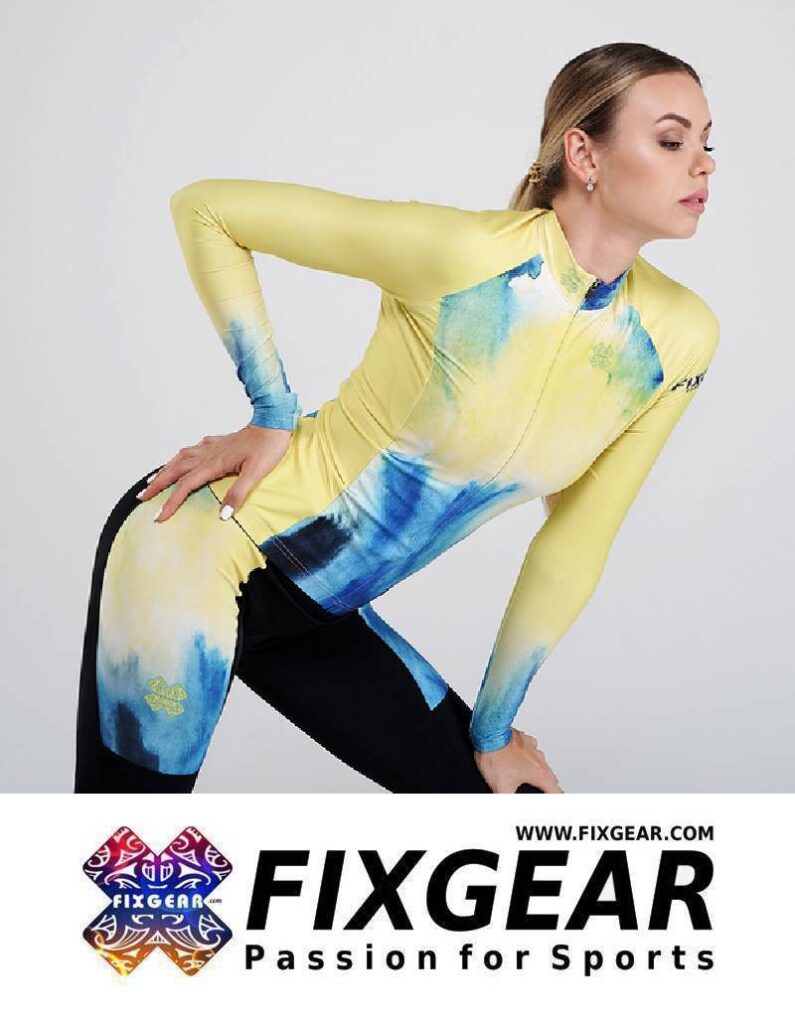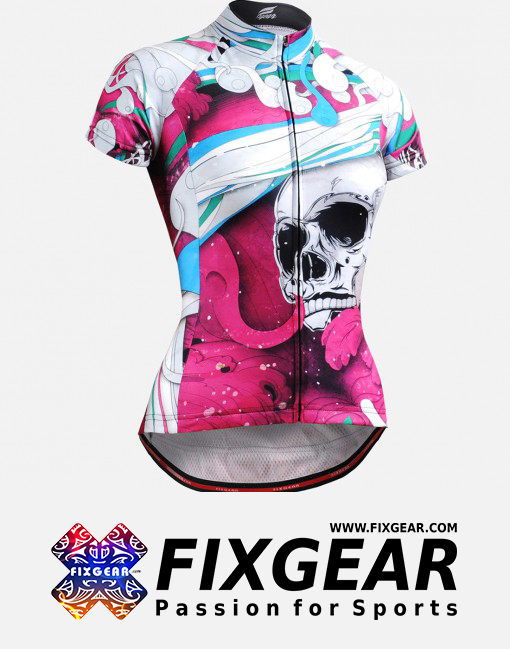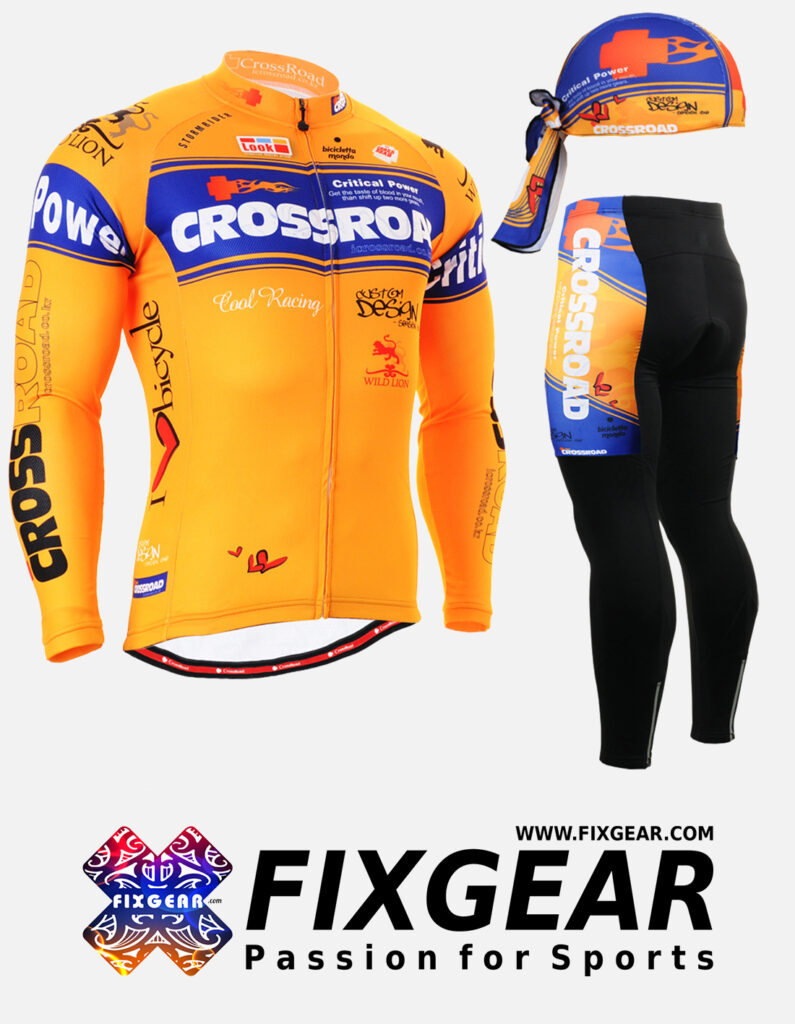The best clothes for cycling typically includes:
1. Cycling Jersey: Made from moisture-wicking fabric to keep you dry, often featuring pockets for storage.
2. Cycling Shorts: Padded shorts help reduce friction and improve comfort during long rides.
3. Base Layer: A lightweight, moisture-wicking base layer can provide extra warmth in cooler weather.
4. Windbreaker or Jacket: A lightweight, breathable jacket protects against wind and light rain.
5. Gloves: Padded gloves enhance grip and comfort, reducing hand numbness.
6. Socks: Specialized cycling socks are designed for breathability and moisture management.
7. Shoes: Cycling shoes with a stiff sole for better power transfer, often compatible with clipless pedals.
8. Helmet: A properly fitted helmet is essential for safety.
9. Accessories: Consider sunglasses for eye protection and arm/leg warmers for changing weather conditions.
1 – Can I wear regular clothes as the best clothes for cycling?
Yes, you can wear regular clothes for cycling, especially for short rides or casual cycling. However, there are some considerations:
• Comfort: Regular clothes may not be as comfortable as specialized cycling gear, especially for longer rides.
• Breathability: Normal fabrics might not wick moisture away, leading to discomfort.
• Mobility: Loose clothing could get caught in the bike’s components, so ensure your clothing allows for a full range of motion.
• Padding: You might experience discomfort from the bike seat without padded shorts.
Investing in best clothes for cycling could enhance your comfort and performance if you plan to cycle frequently or for longer distances.
2 – Do you wear a bra when cycling?
A bra while cycling is generally recommended for comfort and support, especially for individuals with larger busts. A sports bra is often preferred, as it provides better support during physical activity, reduces movement, and helps prevent discomfort. Ultimately, the choice depends on personal preference and comfort level.
3 – What is the best bike brand?
Some of the best bike brands known for quality and performance include:
1. Trek: Offers a wide range of bikes for various cycling styles, known for their durability and innovation.
2. Specialized: Renowned for high-quality road and mountain bikes, focusing on performance and technology.
3. Giant: One of the largest bike manufacturers, providing a diverse selection of bikes at various price points.
4. Cannondale: Known for their lightweight frames and high-performance bikes, particularly in the road and mountain biking categories.
5. Bianchi: An iconic Italian brand famous for its road bikes and classic designs.
6. Santa Cruz: They are highly regarded for their mountain bikes and are known for excellent suspension and build quality.
7. Scott: Offers a variety of bikes, including road, mountain, and e-bikes, with a focus on innovation.
8. Fuji: Provides a range of bikes, including road, mountain, and hybrids, often at competitive prices.
9. Raleigh: Known for classic designs and a good range of commuter and recreational bikes.
10. Norco: A Canadian brand known for its mountain and road bikes, focusing on performance and quality.
Choosing the best brand often depends on your cycling needs, preferences, and budget.
4 – What do professional cyclists wear under their shorts?
Professional cyclists typically wear padded chamois shorts under their cycling shorts. These chamois are designed to cushion and reduce friction, enhancing comfort during long rides. It’s common for cyclists to wear these padded shorts without additional underwear to minimize chafing and ensure a better fit.
5 – What is the dress code for bike riders?
The dress code for bike riders can vary depending on the type of cycling and the environment. Here are some general guidelines:
1. Casual Riding: For short, leisurely rides, casual clothing like t-shirts, shorts, or comfortable pants is acceptable. Just ensure your clothes allow for movement.
2. Road Cycling: For longer rides, cyclists typically wear padded cycling shorts and a moisture-wicking jersey, which enhances comfort and aerodynamics.
3. Mountain Biking: Riders often wear durable, breathable clothing, including baggy shorts and technical shirts that can withstand rough terrain.
4. Commuting: If cycling to work, consider wearing comfortable, professional-looking clothing that is also practical for cycling. Many choose to wear cycling-specific gear or layers that can be easily removed.
5. Safety Gear: Regardless of the type of cycling, wearing a properly fitted helmet is essential for safety. Additionally, wearing bright or reflective clothing is recommended for visibility, especially when riding in low-light conditions.
6. Weather Considerations: Dress appropriately for the weather, including layering, waterproof jackets, gloves, or arm warmers in cooler conditions.
Ultimately, the key is to wear what feels comfortable and allows for safe cycling.
6 – Do cyclists wear spandex?
Yes, many cyclists wear spandex, particularly in the form of cycling shorts and jerseys. Spandex, also known as Lycra, is popular among cyclists for several reasons:
1. Comfort: Spandex provides a snug fit that reduces chafing and discomfort during rides.
2. Flexibility: The material allows for a full range of motion, which is essential for pedalling efficiently.
3. Moisture Management: Spandex is often blended with moisture-wicking fabrics, helping to keep cyclists dry by drawing sweat away from the body.
4. Aerodynamics: The tight fit of spandex clothing helps reduce wind resistance, which can benefit performance, especially in road cycling.
5. Padding: Many spandex cycling shorts have built-in padding, providing additional comfort on long rides.
Overall, spandex is a common choice among cyclists for its performance-enhancing qualities.
7 – Can you cycle in jeans?
Yes, you can cycle in jeans, especially for short rides or casual cycling. However, there are some factors to consider:
• Comfort: Jeans can be restrictive compared to specialized cycling clothing, potentially causing discomfort during longer rides.
• Mobility: The stiffness of denim may limit your range of motion, making pedalling less efficient.
• Breathability: Denim is not as breathable as moisture-wicking fabrics, which may lead to overheating in warmer conditions.
• Chafing: Regular jeans may not provide the same level of protection against chafing as padded cycling shorts.
If you wear jeans, look for styles with a bit of stretch for better comfort and mobility. Investing in cycling-specific clothing may be a better option for frequent or longer rides.
8 – What kind of pants should you wear when biking?
When biking, the best types of pants to wear include:
1. Cycling Shorts: Padded cycling shorts are designed for comfort and reduce friction during rides, making them ideal for longer distances.
2. Baggy Shorts: Loose-fitting baggy shorts from breathable materials can provide comfort and flexibility for mountain biking or casual rides.
3. Capri Pants: These offer more coverage than shorts while still allowing for movement, making them a good option for cooler weather.
4. Leggings or Tights: Specialized cycling leggings or tights, often with padding, provide a snug fit, warmth, and comfort, especially for road cycling.
5. Performance Pants: Look for pants made from moisture-wicking, stretchy fabrics that allow for movement and breathability.
6. Waterproof Pants: In wet conditions, waterproof or water-resistant pants can keep you dry while cycling.
Ultimately, the best choice depends on the cycling you plan to do, the weather, and your personal comfort preferences.
9 – What material is best for cycling clothes?
The best materials for cycling clothes typically include:
1. Polyester: Known for its moisture-wicking properties, polyester helps keep you dry by drawing sweat away from the body. It’s lightweight and durable, making it a popular choice for cycling jerseys and shorts.
2. Nylon: This synthetic fabric is strong, lightweight, and abrasion-resistant. Nylon is often used in cycling shorts and outerwear for its durability and comfort.
3. Spandex (Lycra): Often blended with other fabrics, spandex provides excellent stretch and a snug fit. It enhances mobility and comfort, making cycling shorts and jerseys ideal.
4. Merino Wool: A natural fibre that regulates temperature and wicks moisture, merino wool is great for cooler weather. It’s breathable, soft, and helps prevent odour, making it suitable for base layers.
5. Cotton: While not ideal for performance cycling, cotton can be comfortable for casual rides. However, it absorbs moisture and takes longer to dry, which may lead to discomfort during longer rides.
6. Softshell and Hardshell Fabrics: SoftshellsSoftshells provide flexibility and warmth for outer layers for outer layers, while hard shells offer waterproof protection in wet conditions.
Choosing the right material often depends on the weather conditions and the cycling you plan to do.
10 – What do cyclists have to wear?
Cyclists should wear a combination of clothing and gear to ensure safety, comfort, and performance. Here are the essentials:
1. Helmet: A properly fitted helmet is crucial for safety and is often required by law.
2. Cycling Jersey: Made from moisture-wicking fabric, a cycling jersey helps keep you dry and often features pockets for storage.
3. Cycling Shorts: Padded cycling shorts reduce friction and enhance comfort during long rides.
4. Base Layer: A lightweight, moisture-wicking base layer can provide extra warmth in cooler weather.
5. Windbreaker or Jacket: A lightweight, breathable jacket protects against wind and light rain.
6. Gloves: Padded gloves improve grip and comfort, helping to reduce numbness in the hands.
7. Socks: Specialized cycling socks are designed for breathability and moisture management.
8. Shoes: Cycling shoes with a stiff sole enhance power transfer, often compatible with clipless pedals.
9. Eyewear: Sunglasses or clear glasses protect your eyes from UV rays and debris.
10. Accessories: Arm and leg warmers, headbands, or buffs can provide additional warmth and comfort in changing weather.
11. Reflective Gear: Bright or reflective clothing is recommended for visibility, especially when riding in low-light conditions.
The specific attire may vary based on the type of cycling (road, mountain, commuting) and the weather conditions.
11 – What should you wear while cycling?
While cycling, it’s essential to wear appropriate clothing and gear to ensure comfort, safety, and performance. Here’s what you should consider wearing:
1. Helmet: Always wear a properly fitted helmet to protect your head in case of a fall.
2. Cycling Jersey: Opt for a moisture-wicking cycling jersey that helps keep you dry and often features pockets for carrying essentials.
3. Cycling Shorts: Padded cycling shorts provide comfort by reducing friction, especially on longer rides.
4. Base Layer: A lightweight, moisture-wicking base layer can provide added warmth in cooler weather.
5. Windbreaker or Cycling Jacket: A breathable, lightweight jacket that protects against wind and light rain.
6. Gloves: Padded gloves enhance grip and comfort, helping to reduce numbness in the hands during long rides.
7. Socks: Choose specialized cycling socks for breathability and moisture management.
8. Cycling Shoes: Stiff-soled cycling shoes improve pedalling efficiency and are often compatible with clipless pedals for better power transfer.
9. Eyewear: Sunglasses or cycling glasses protect your eyes from UV rays, wind, and debris.
10. Reflective Gear: Bright or reflective clothing increases visibility, especially when cycling in low-light conditions.
11. Accessories: Depending on the weather, consider arm warmers, leg warmers, or a buff for additional comfort.
Choosing the proper attire can enhance your cycling experience, making it more enjoyable and safe.
12 – What is the most popular cycling brand?
Some of the most popular cycling brands include:
1. Trek: Known for its wide range of bikes and high-quality components, Trek is a leading brand in the cycling industry.
2. Specialized: Renowned for their innovative designs and performance-oriented bikes, cyclists highly regard Specialized.
3. Giant: As one of the largest bike manufacturers in the world, Giant offers a diverse selection of bikes for all types of riders.
4. Cannondale: Known for its lightweight frames and high-performance bikes, Cannondale is a favourite among serious cyclists.
5. Bianchi: An iconic Italian brand, Bianchi is famous for its road bikes and classic designs.
6. Scott: Offers a range of bikes, including road, mountain, and e-bikes, and is known for its quality and innovation.
These brands are well-respected in the cycling community and offer products that cater to various cycling needs and preferences.

